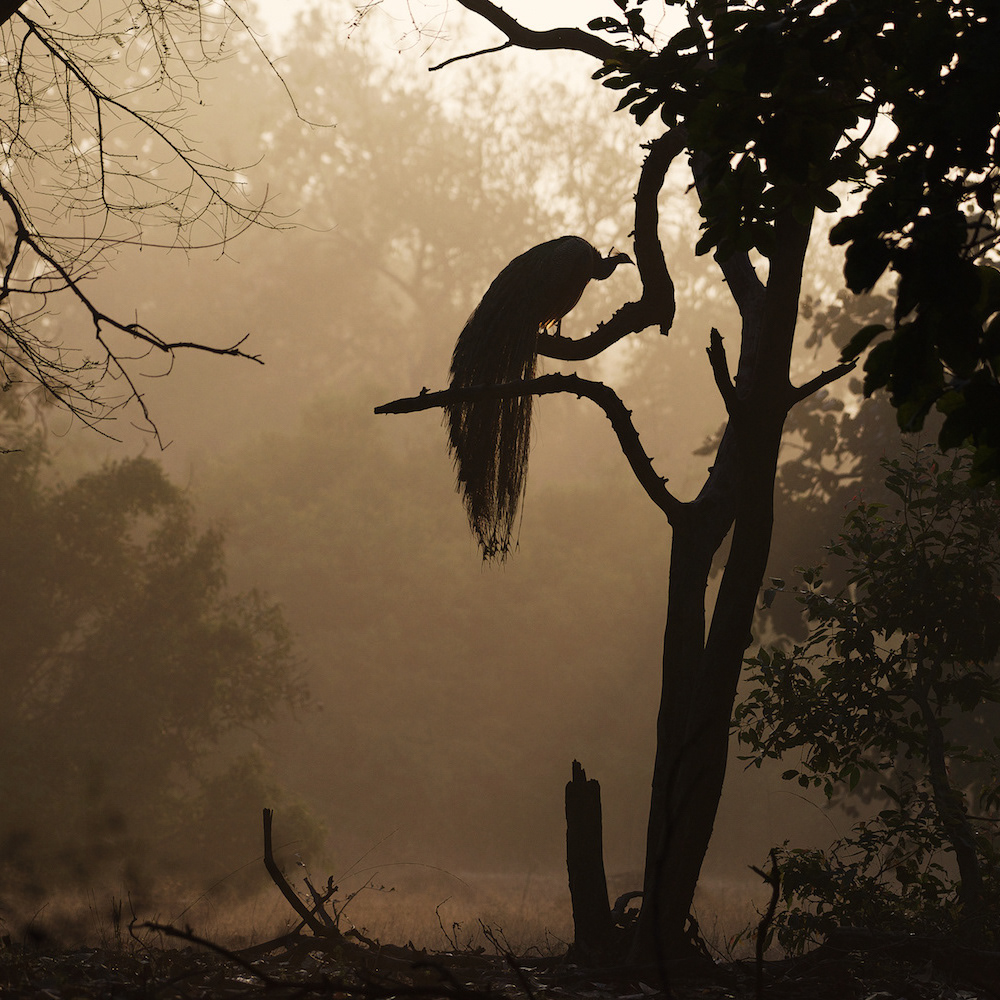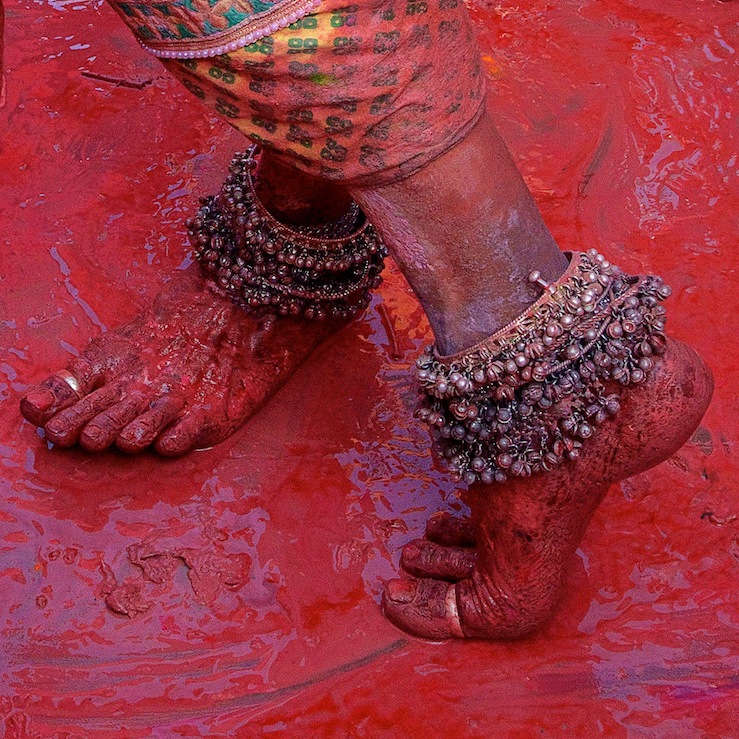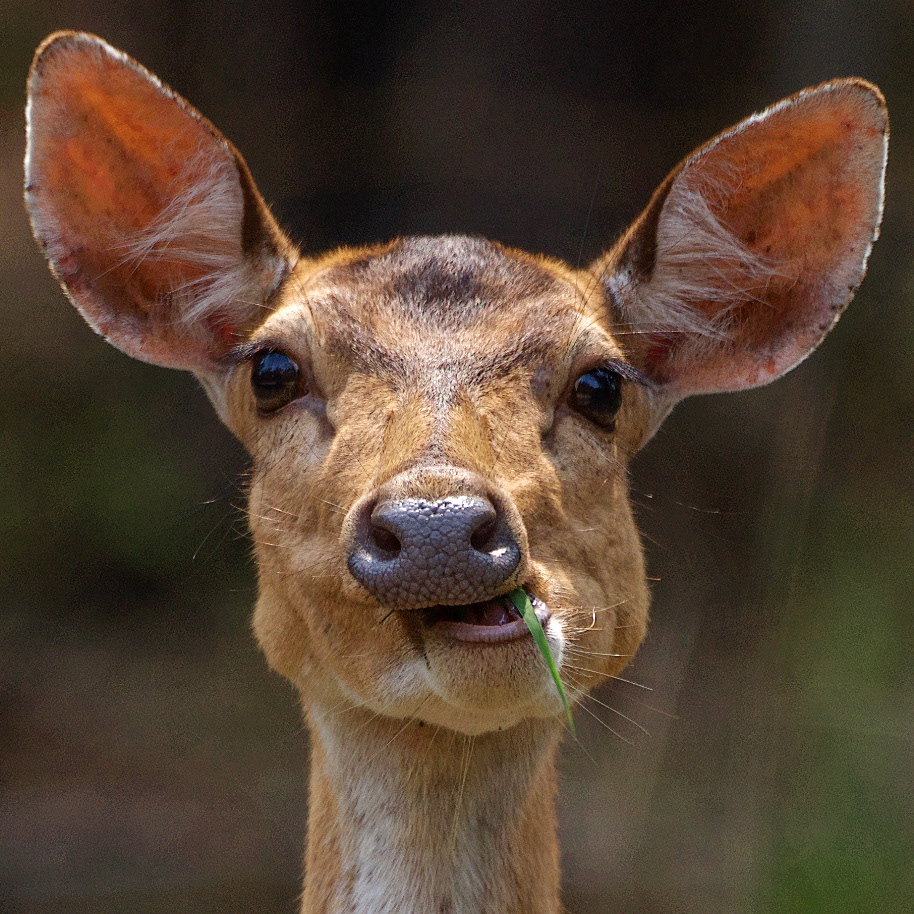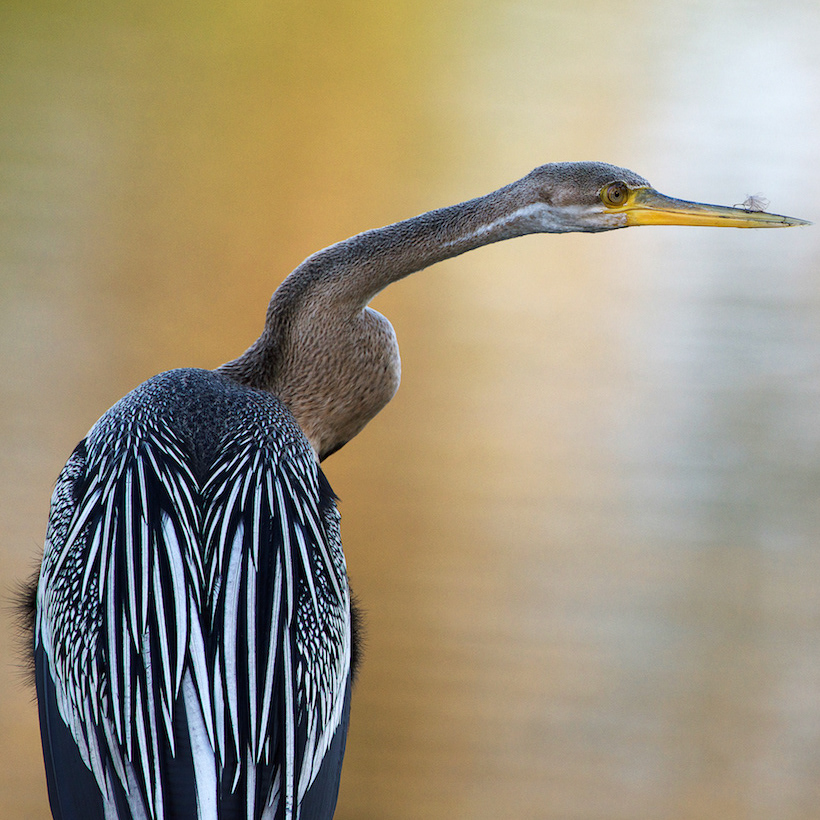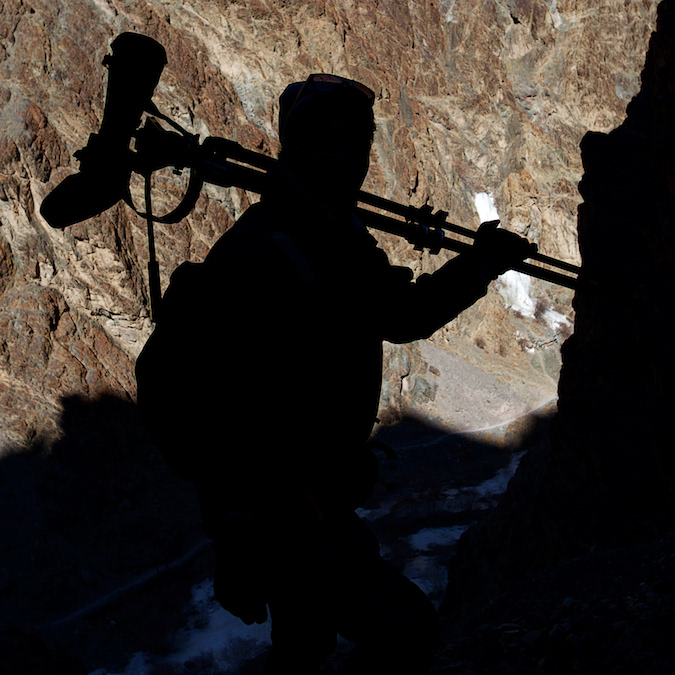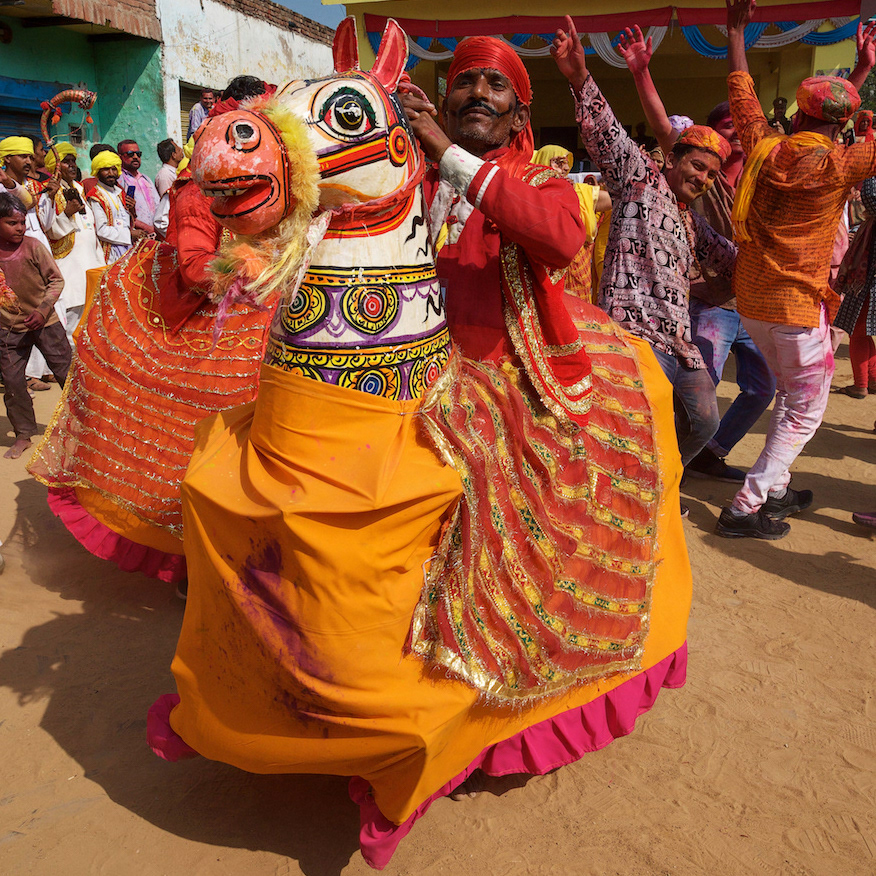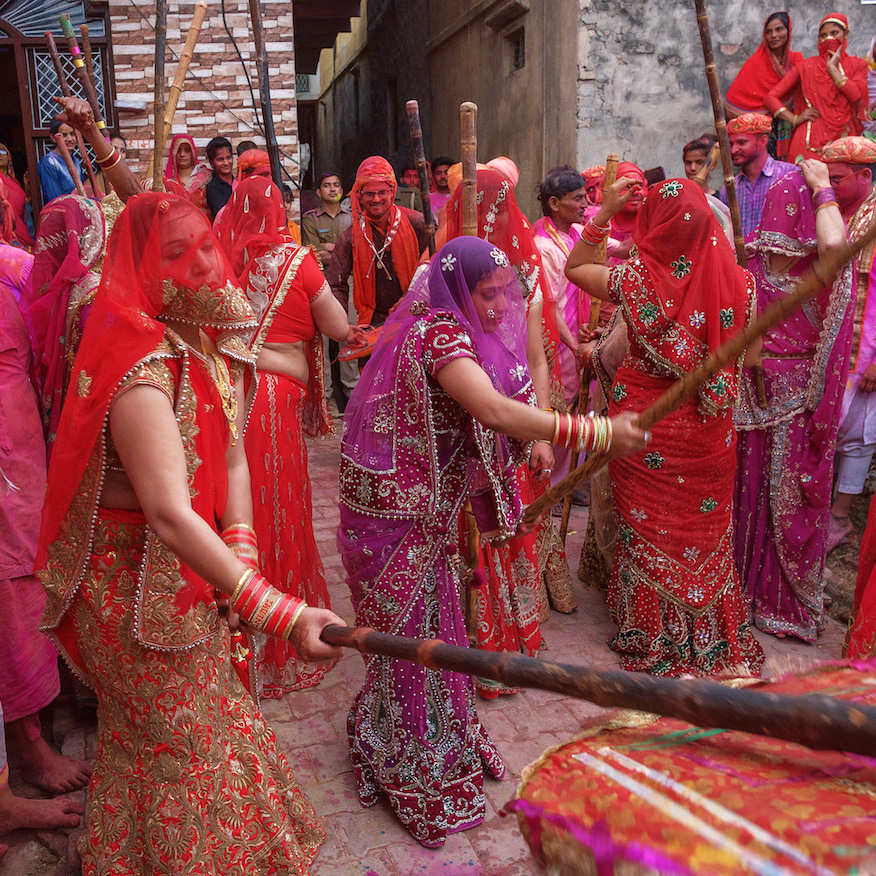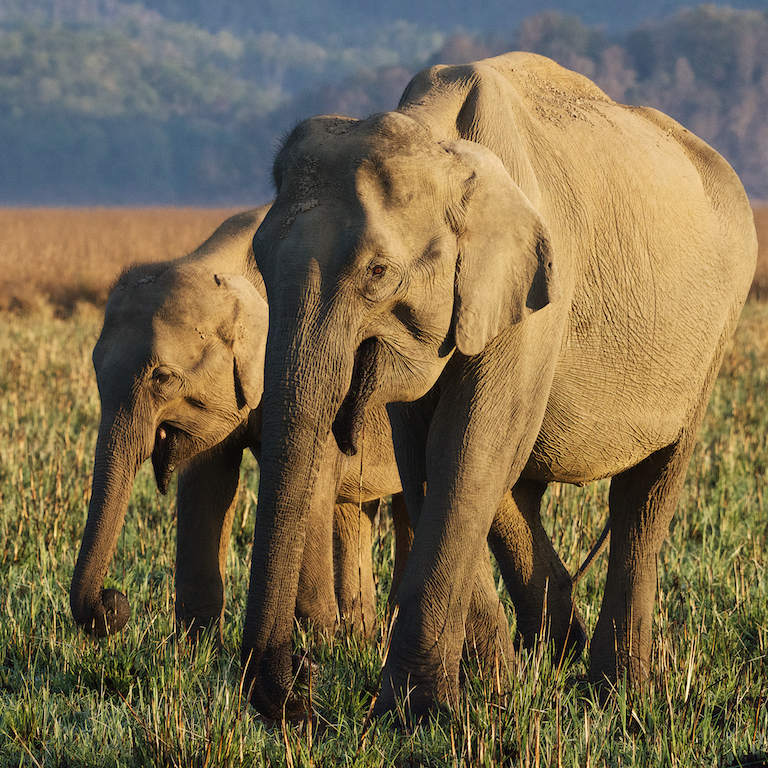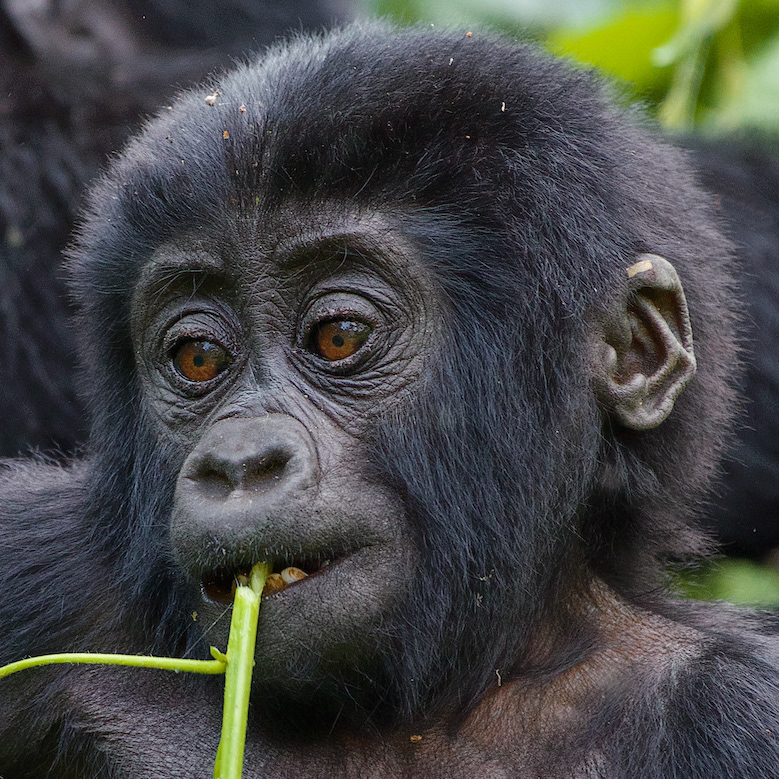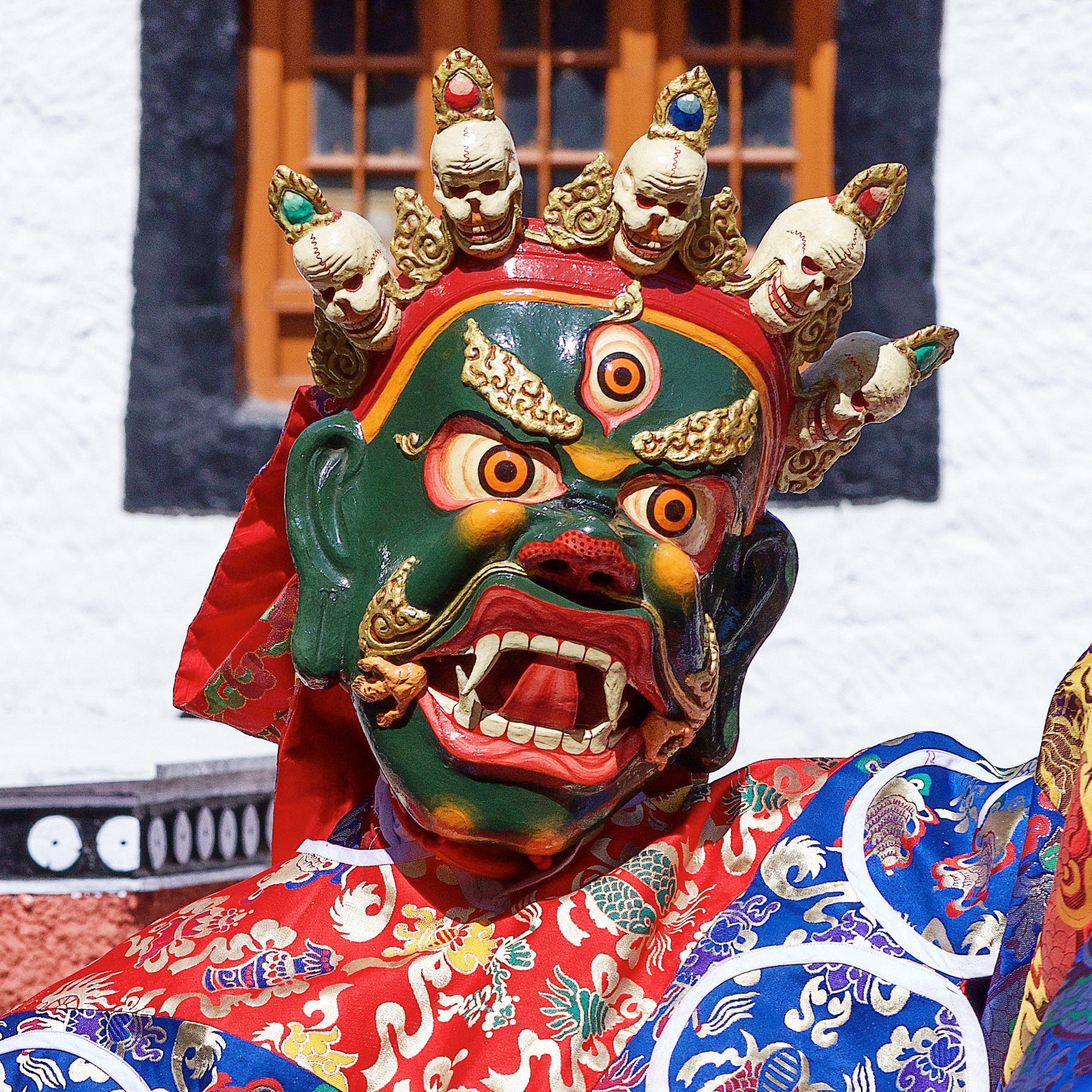During four days in Kanha we had the good fortune of being able to photograph the Dhole, a rare and elusive species, on more than one occasion.
Grateful thanks to our driver and naturalist, Shyam Yadav. His wildlife knowledge, expertise and excellent driving skills enabled us to get in the best position to photograph these amazing animals.
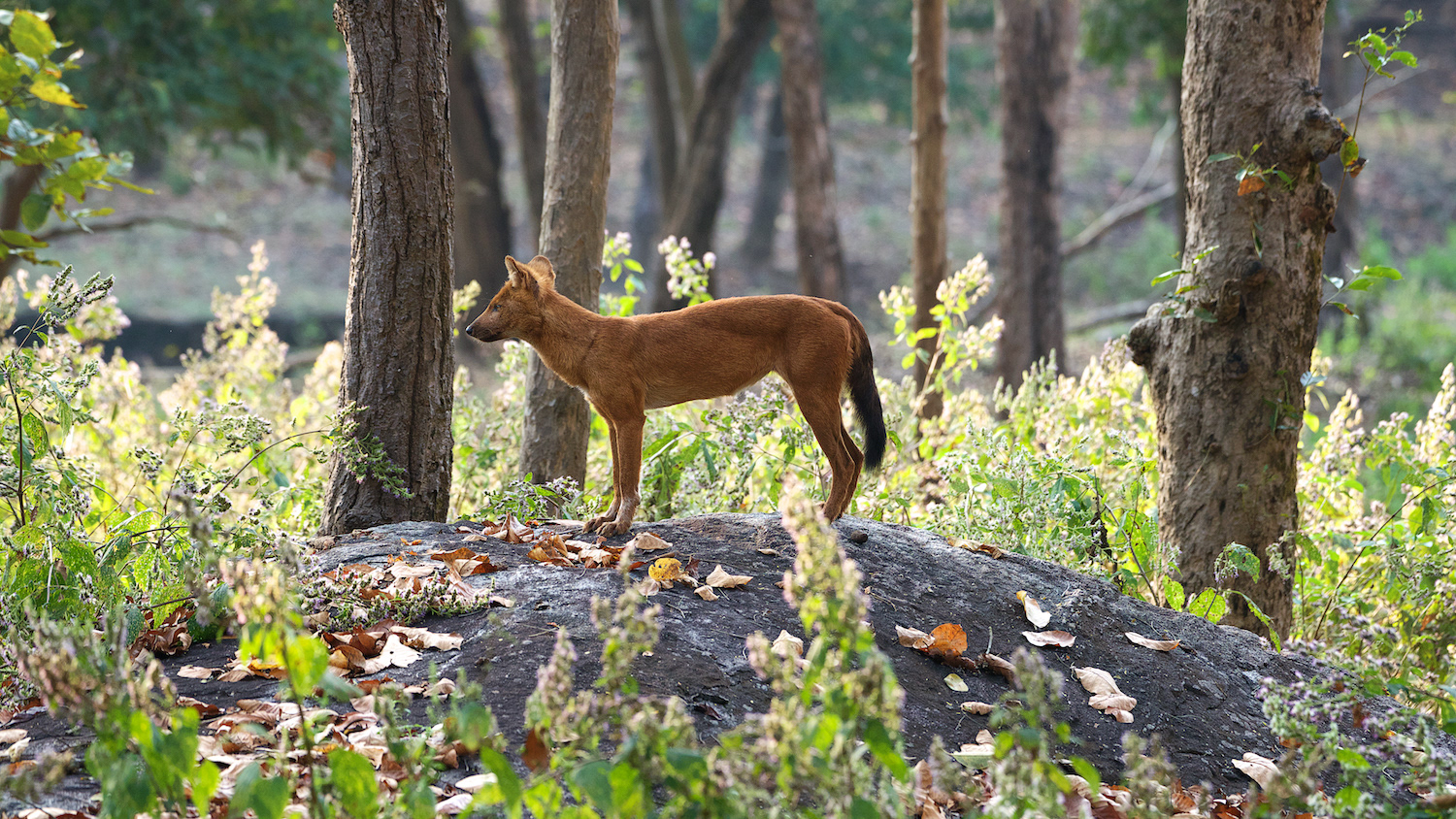
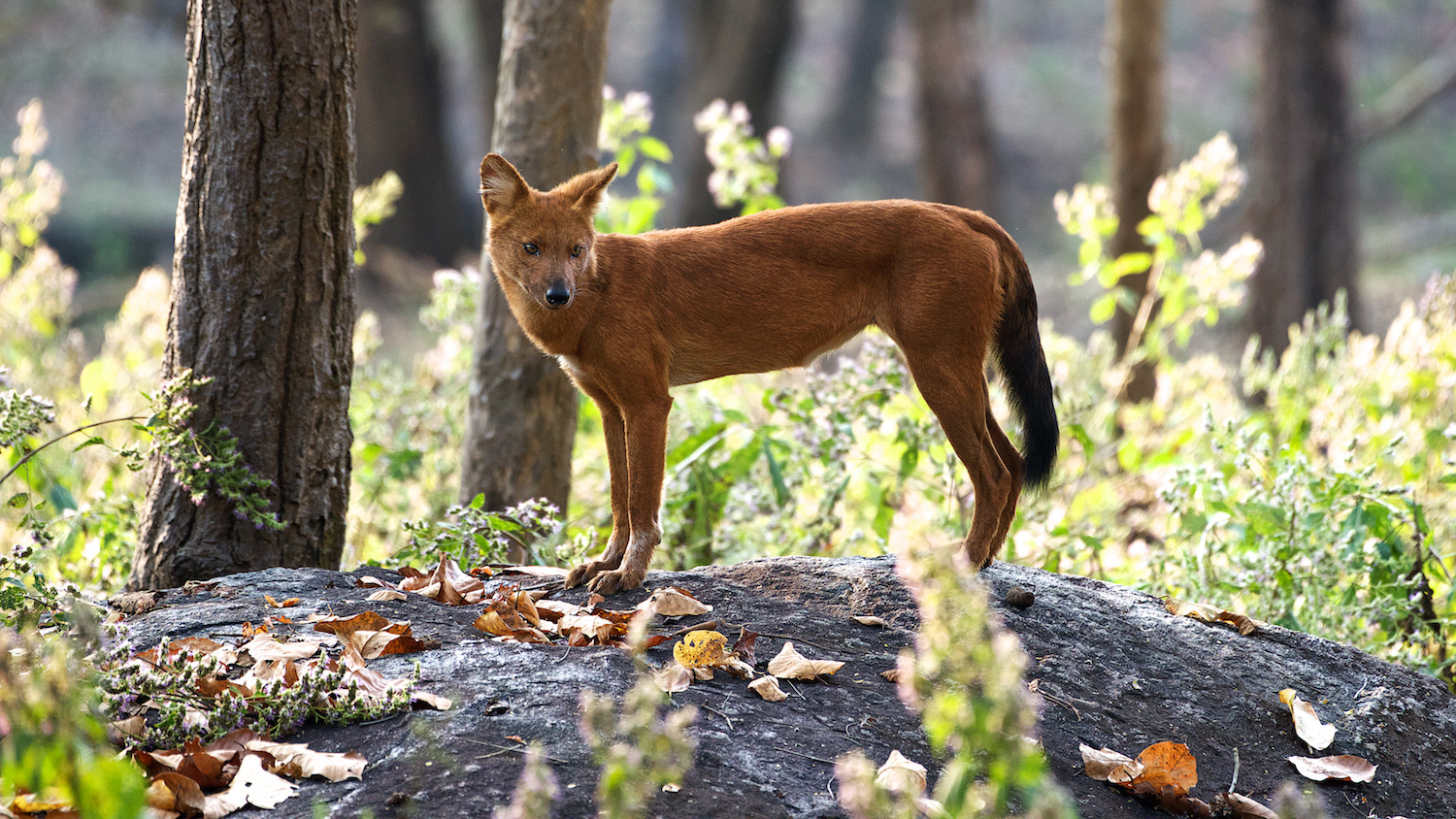
Dhole
(Cuon alpinus)
There are many common names for the Dhole - Indian Wild Dog, Asiatic Wild Dog, Whistling Dog, Red Dog, and Mountain Wolf.
The Dhole is an endangered wild dog with less than 2,500 individuals left in the wild. They occupy a wide variety of climates and habitats across Asia, including tropical rainforests, dry-deciduous woodlands, open grasslands and cold mountain regions. Unfortunately, disease, human conflict, hunting and habitat destruction have led them to the edge of extinction.
Dhole are highly sociable and tend to live in small groups called clans, which typically consist of 5 to 12 individuals. Groups often contain more males than females, with usually just one breeding female. They are known to have a lifespan of around 10 years.
The Dhole doesn't bark but communicates by using a series of repetitive whistles, hence they are sometimes known as the Whistling Dog. Whilst hunting they produce a variety of growls, screams and clucks to communicate with each other.

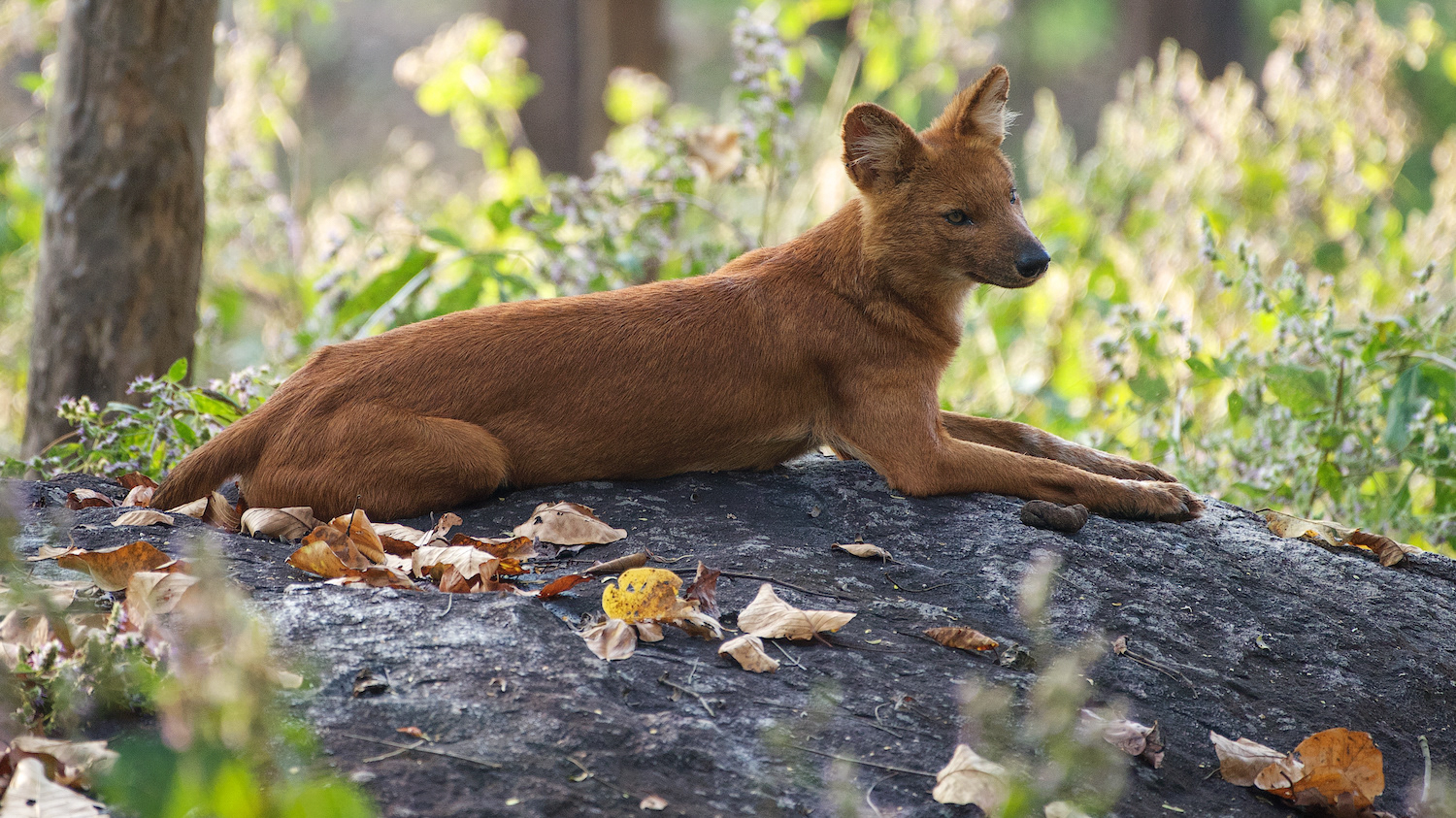
Due to their pack-hunting strategy, Dholes can bring down prey animals many times their size. Their diet consists mainly of various species of deer, wild boar and hare but they will also eat wild berries, insects and lizards. Having caught a large prey, and in order to prevent the theft of their meal, they need to consume it quickly and often start to eat it whilst it's still alive. Even the Tiger is wary of a Dhole clan on the hunt.
A female Dhole resting on a rock.
Feeling relaxed, she falls asleep.

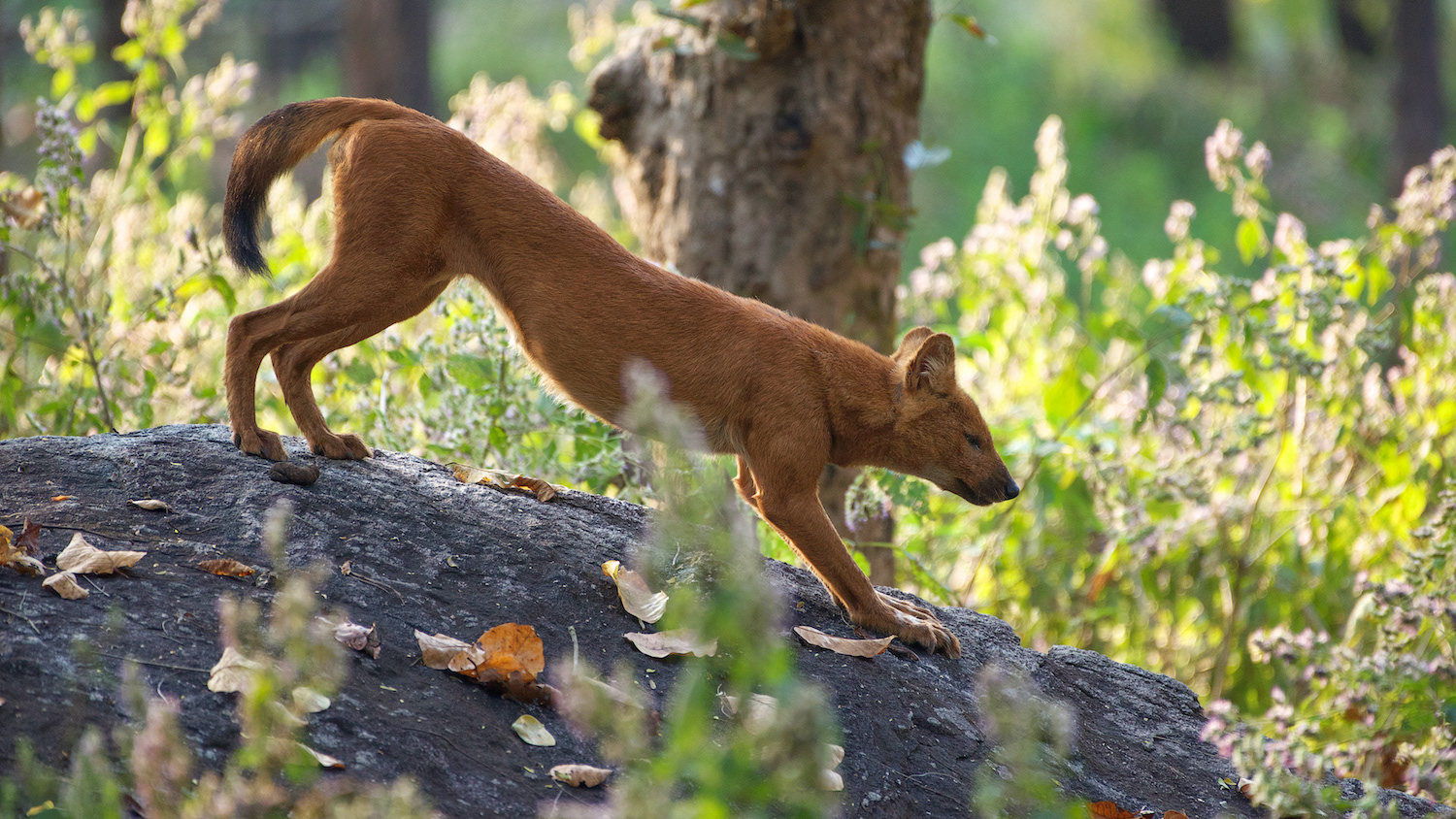
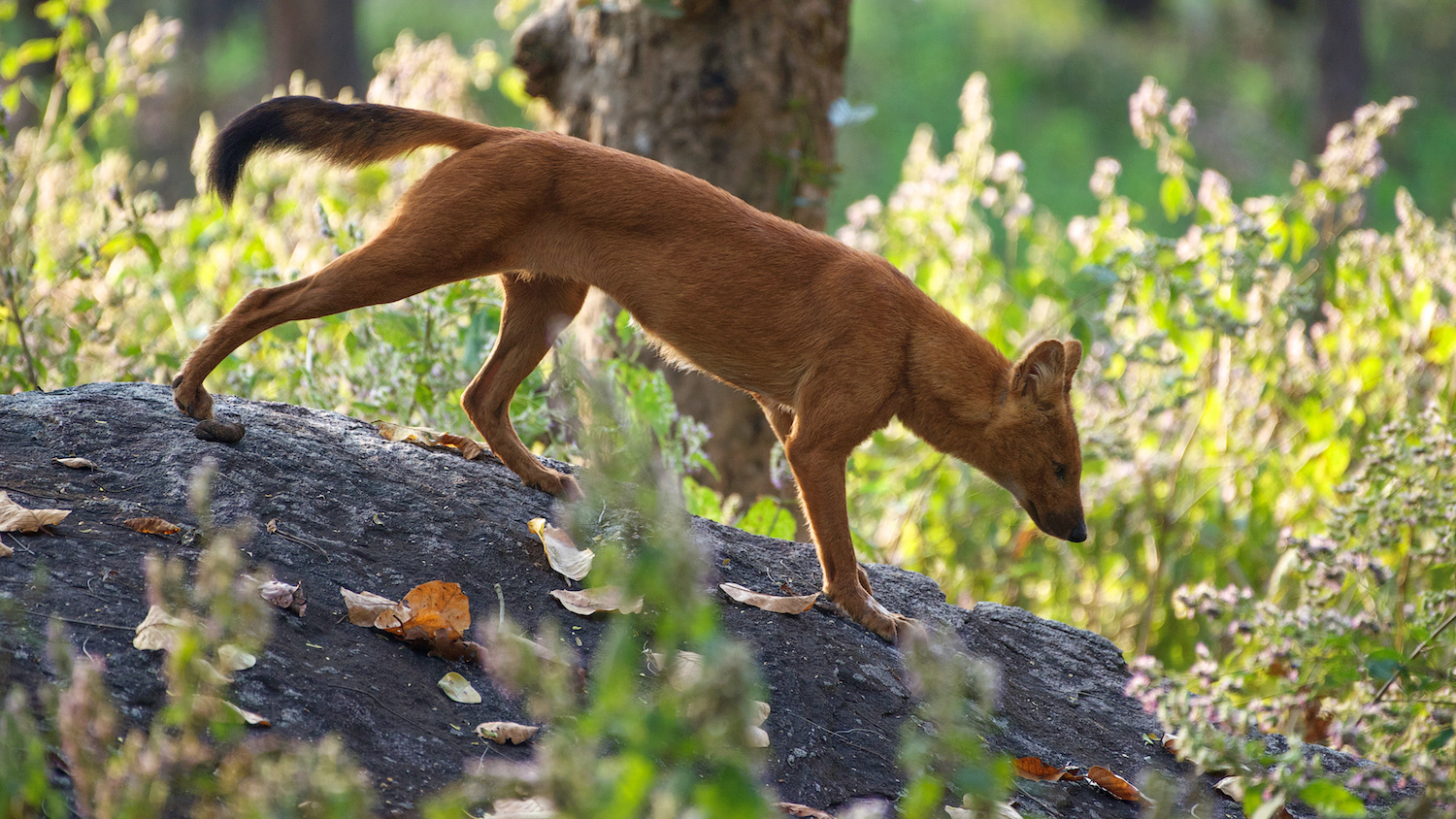

After sleeping, she stretches and continues on her way.
She moves through the forest.
Picking up the scent of a male she makes her way towards him.

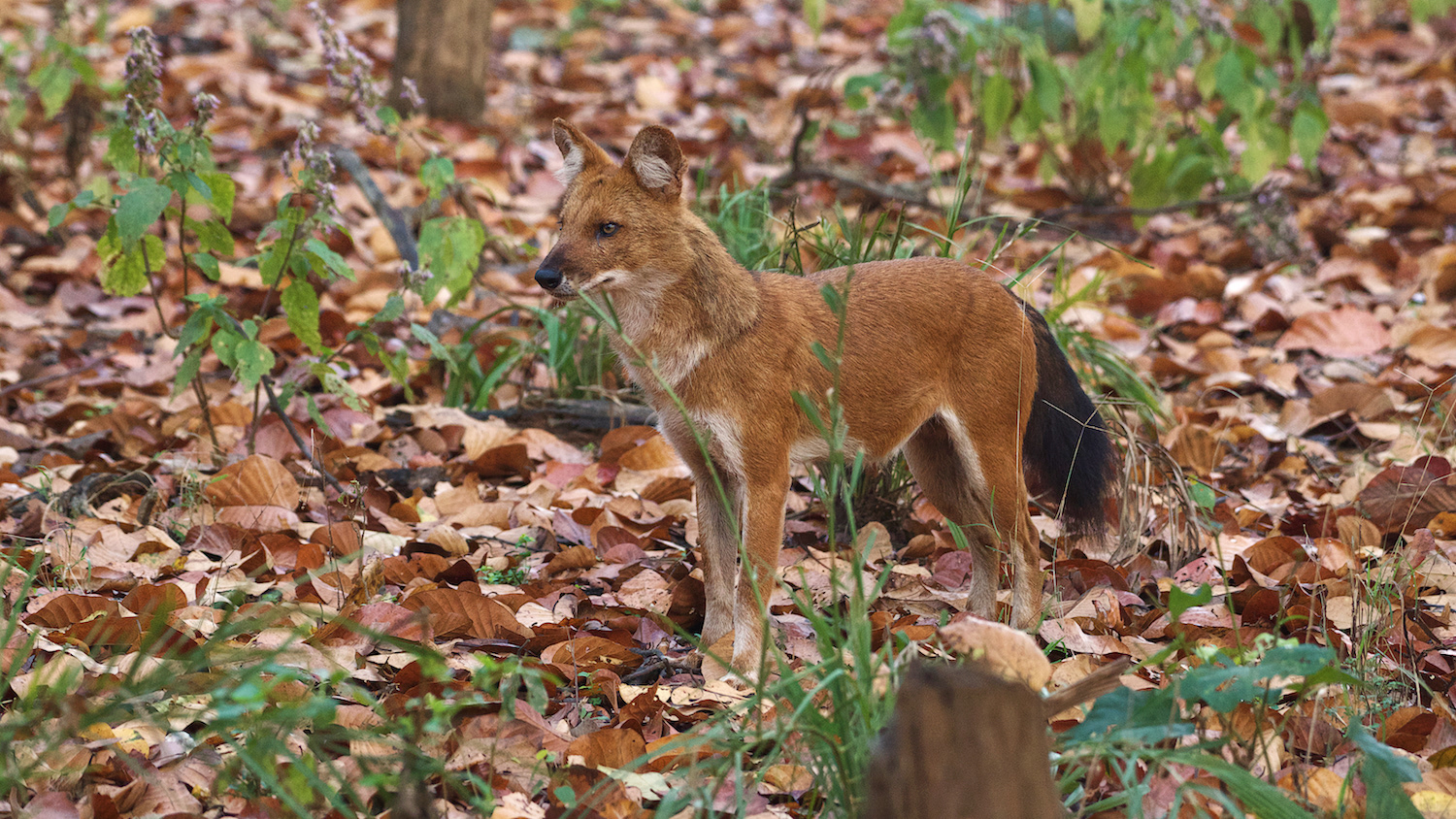
The male Dhole spots the female and awaits her approach.
The male and female come together.


The male lays on the ground and social interaction, which involves nuzzling, ear-chewing and body-rubbing, takes place between the pair.

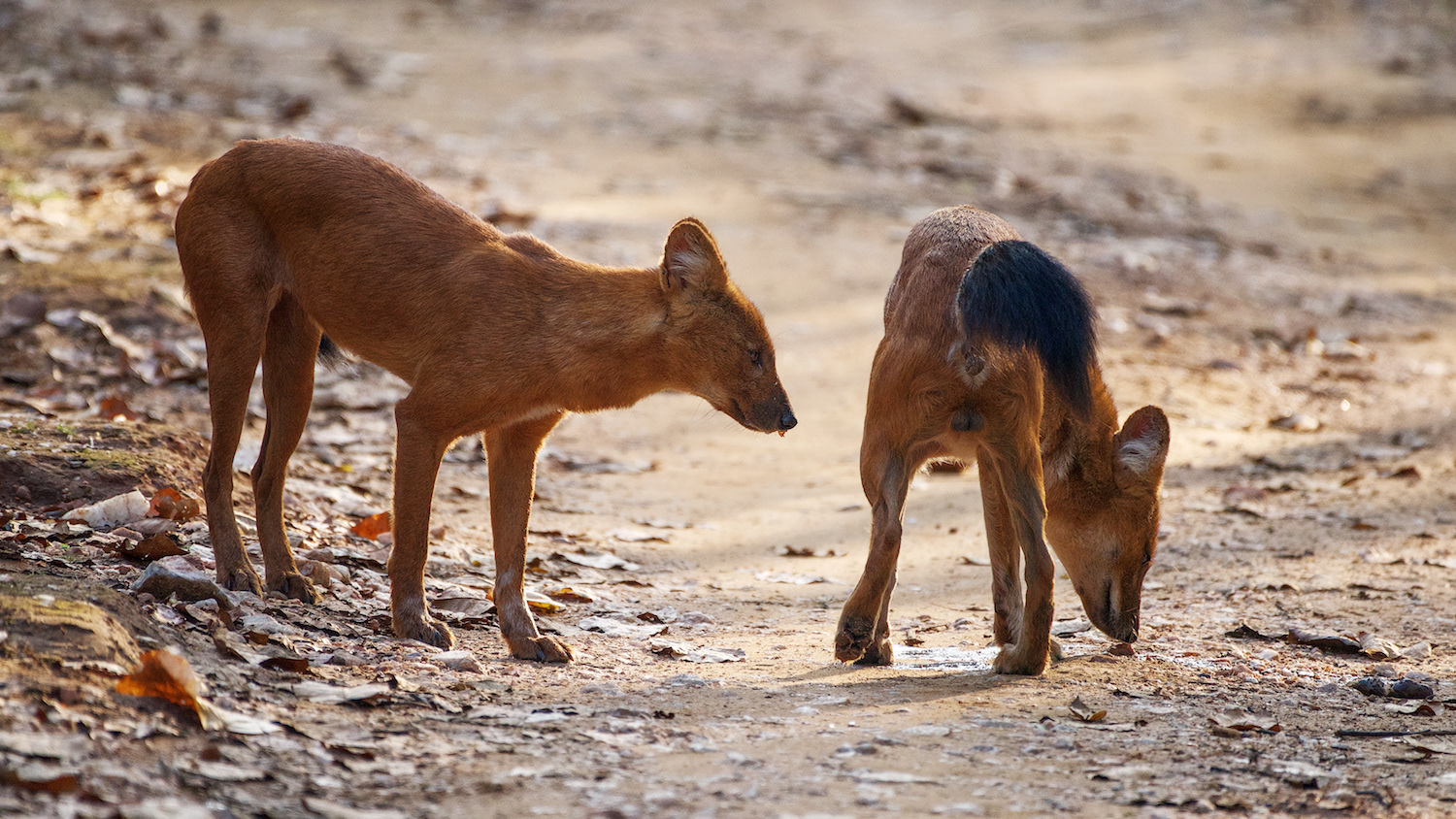
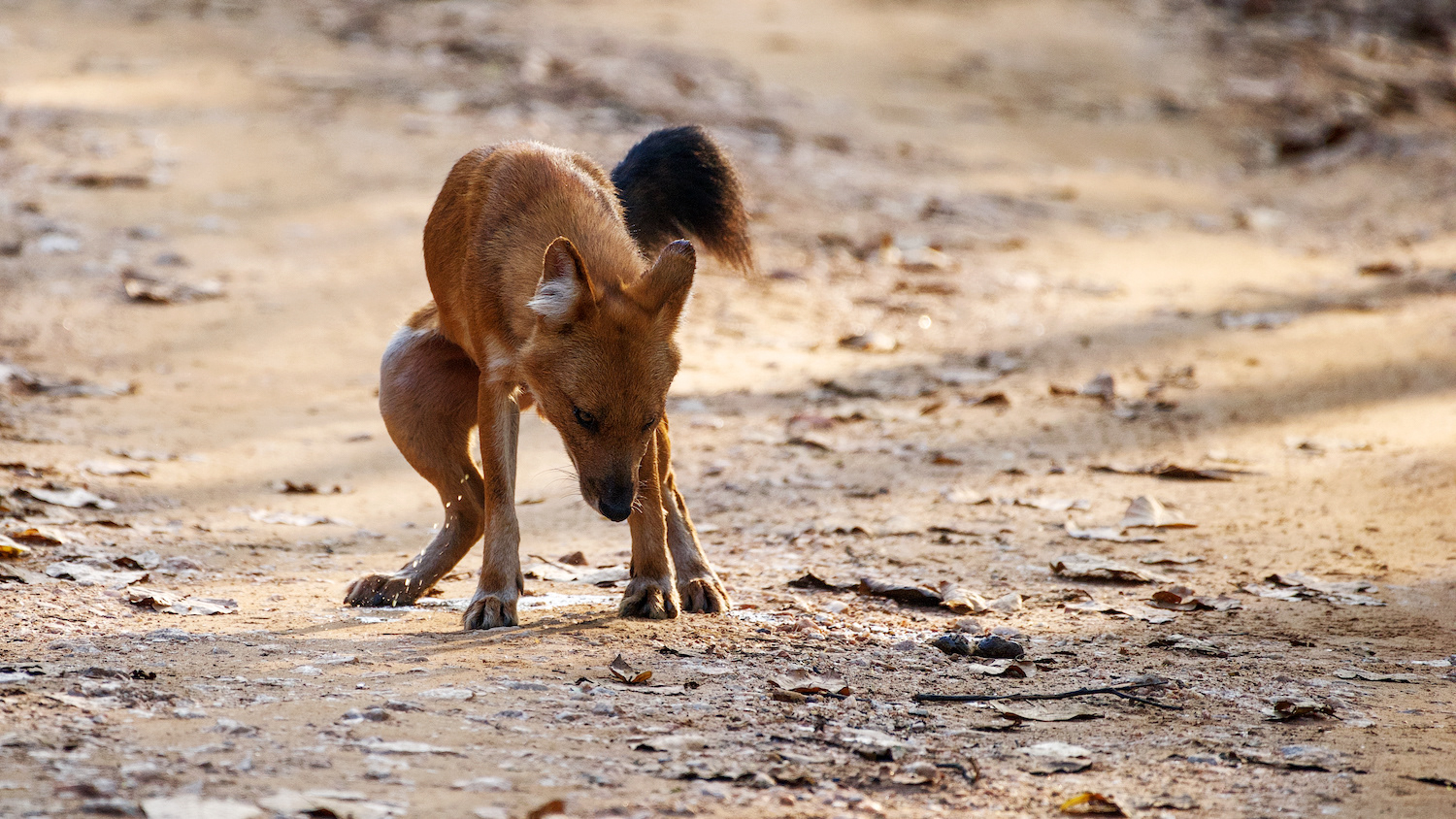
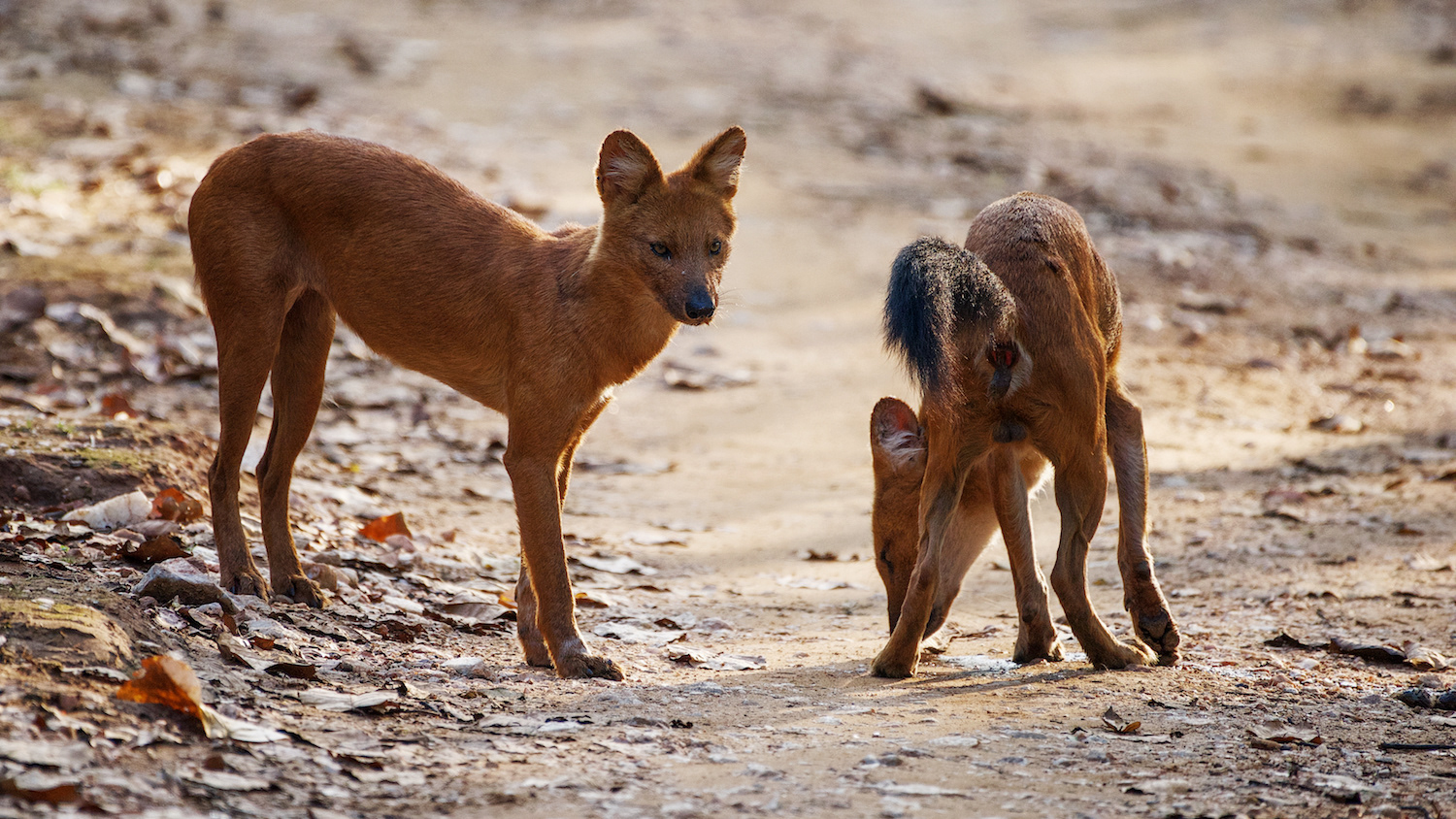

Both animals scent-mark on the road, close to our vehicle. They urinate and defecate in the same place, in turn, and on top of each other’s scat.
The female stands up on her front legs and urinates over the male’s scat, to scent-mark on
top of his.
top of his.
The male lays down and enjoys the female's attention.
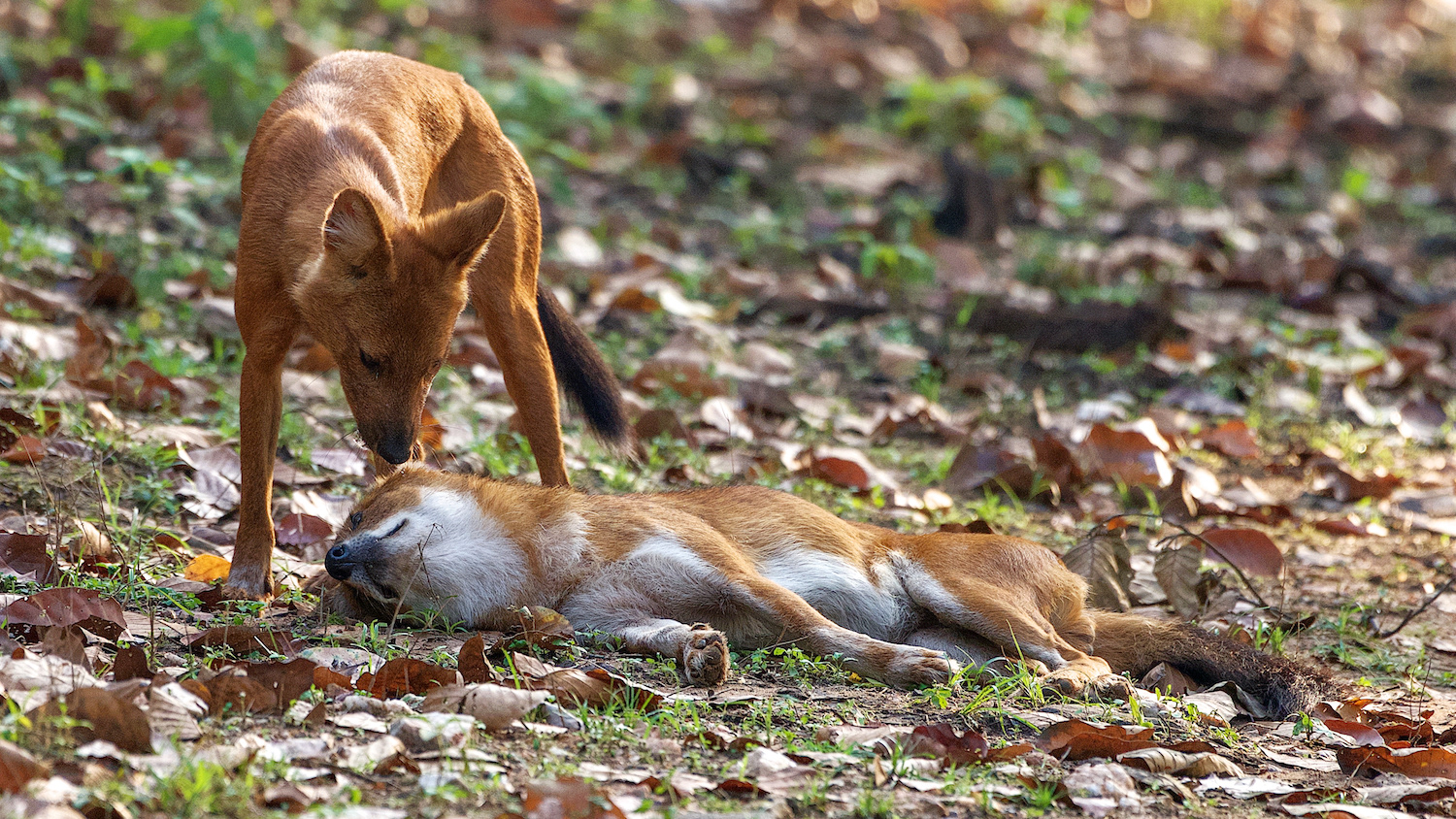
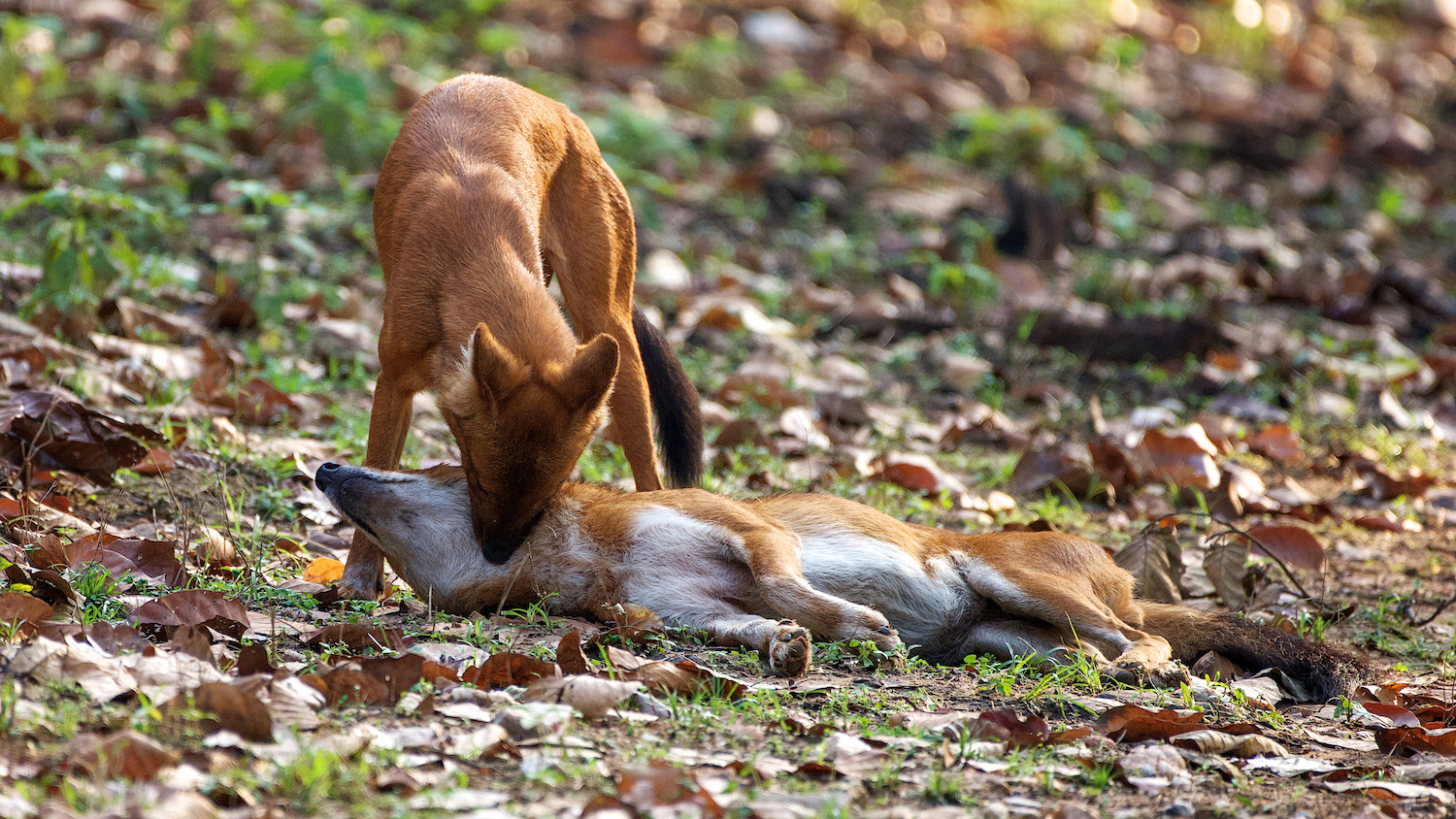


Dholes are monogamous, having only one mate at a time.

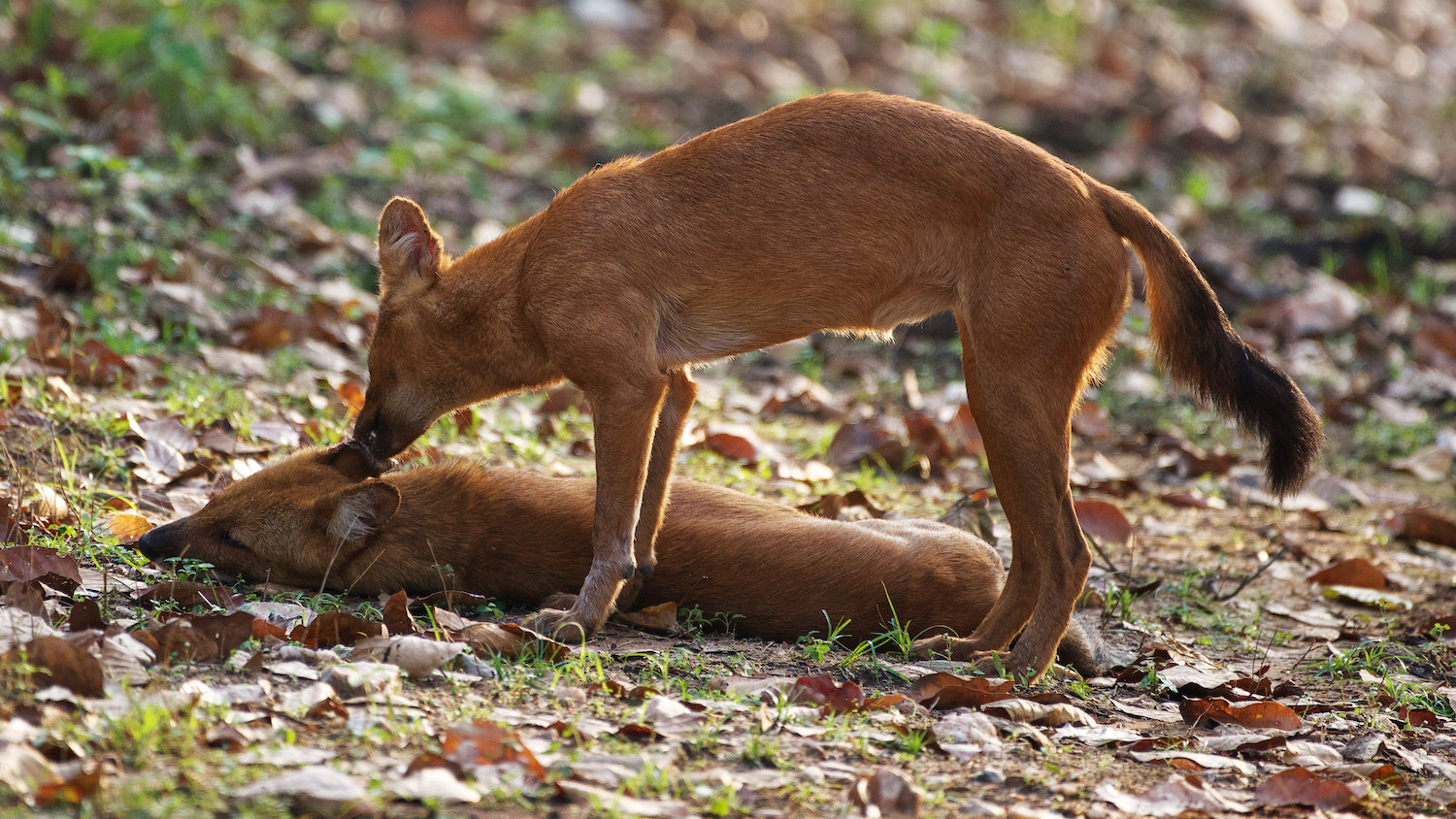
The female licks and chews the male's ears.
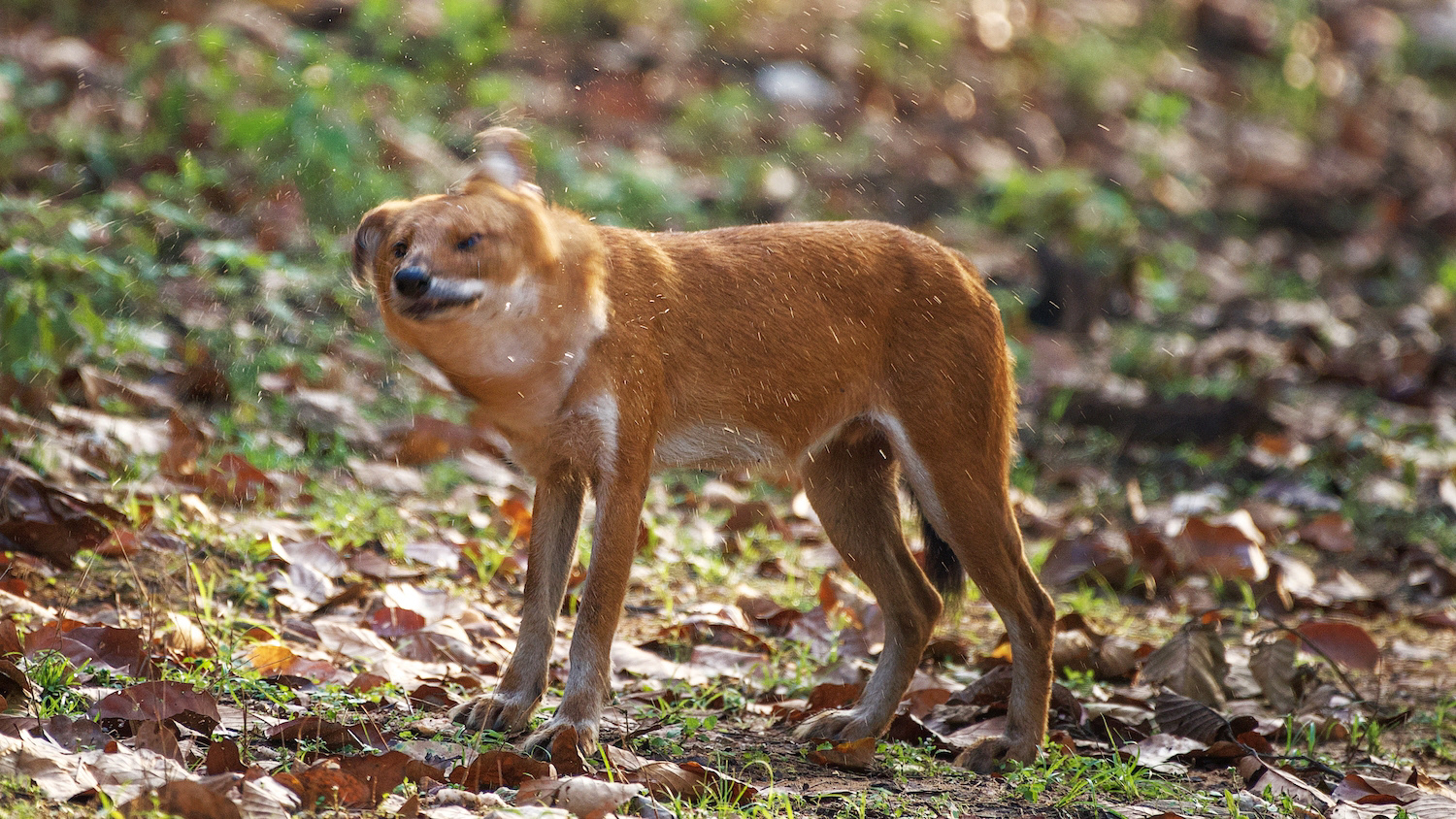
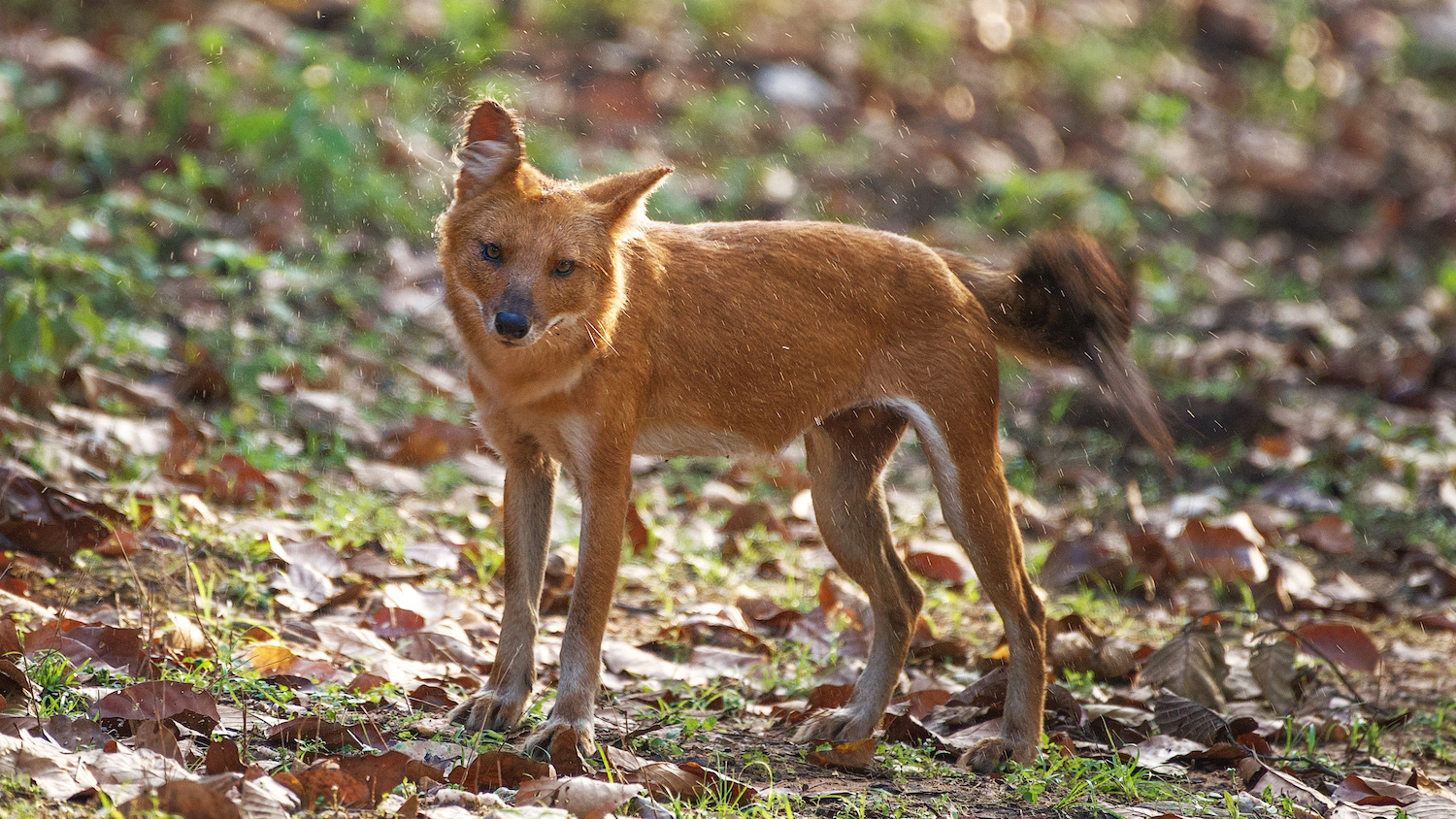
The male shakes his head to disperse the saliva and moisture left by the female when she chewed
his ears.
his ears.
Dhole - Hunting
On our next drive, our good fortune continued when a lone Dhole suddenly appeared on the track in front of our vehicle. The dog totally ignored us and ran past at close range. We realised it was stalking a small group of Chital. The deer were in complete disarray as the dog approached. They scattered at full speed, and then stood with tails raised, stomping their feet whilst their bellowing alarm calls rang out around the forest. It was a very exciting ten minutes of action to watch and photograph.
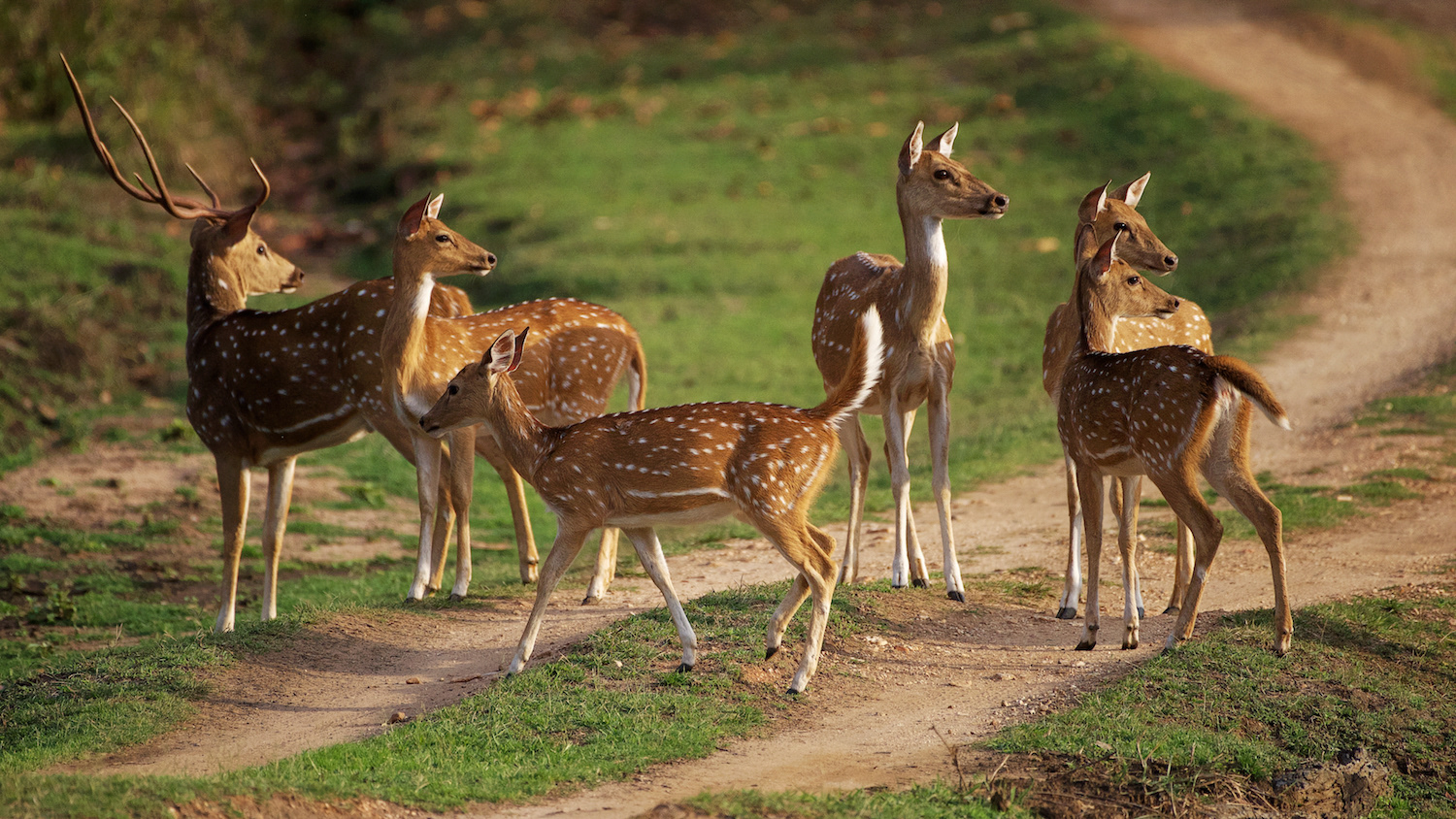

A herd of Chital spot the lone Dhole in the distance. As it aproaches, they stand their ground, watching out for any danger, tails raised, stomping their feet and sending alarm calls as a warning to others .
Dhole are very efficient predators and communal pack hunters and can bring down prey animals many times their size, however, the likelihood of a lone Dhole being successful in a hunt of a large animal is extremely low.
Chital scatter and go into a full sprint to escape the Dhole which is giving chase.
The dog runs down the road in pursuit of the group of Chital.

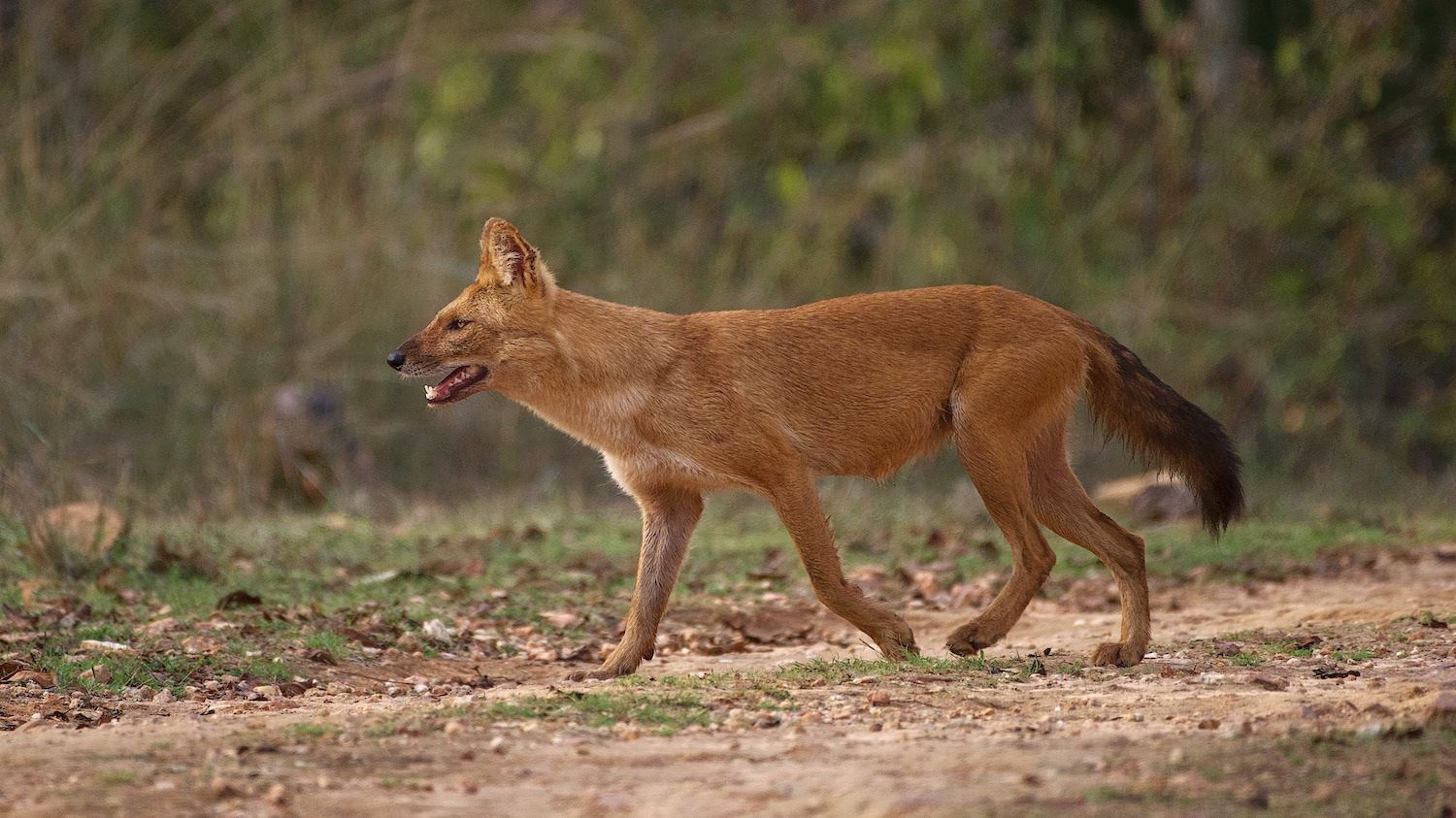
Dhole stalking the Chital.
Chital on the run from the Dhole.


Dhole in full flight, jumping over a pool of water.
The Dhole watches as the Chital disappear into the distance.
But not giving up, the dog jumps back across the water and sprints down the road continuing its pursuit.
We came across the Dhole further down the track, resting in a shallow pool of water after the unsuccessful hunt.
Photographs: ©Don Davies
